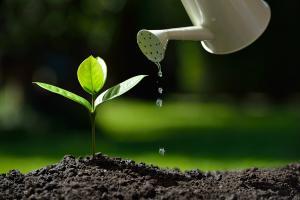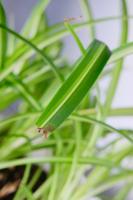Introduction
Plants play a significant role in the ecosystem, as they provide the primary source of food for all living beings. They are also essential for maintaining the environment's balance by producing oxygen through photosynthesis. To survive, plants need water, which they absorb through their roots. However, due to their stationary nature, plants are susceptible to losing water through various processes. Hence, they require mechanisms to prevent water loss, which we will explore in this article.
Cuticle
One of the most crucial adaptations that help prevent water loss in plants is the cuticle, a waxy layer that covers the leaves, stems, and other aerial parts. The cuticle layer is made up of fatty acid esters, which are hydrophobic and repel water. The cuticle layer helps to minimize the plant's water loss by creating a barrier between the plant and the external environment. The thicker the cuticle layer, the less water will evaporate from the plant's surface. However, a thicker cuticle layer means less exchange of gases between the plant and the environment, which may affect the plant's growth.
Stomata
Plants require carbon dioxide for photosynthesis, but they also lose water through the same process. To balance these needs, plants have tiny openings on the surface of the leaves called stomata. These stomata allow for gas exchange between the plant and the environment, with carbon dioxide entering the plant and oxygen leaving it. Interestingly, the stomata's opening and closing are regulated by guard cells, which swell to open the stomata and shrink to close it. This mechanism helps to minimize water loss while ensuring that the plant has access to carbon dioxide, which is crucial for survival.
Root Hairs
The root system of a plant is responsible for absorbing water and nutrients from the soil. A plant's root hairs, which are tiny outgrowth on the root epidermis, are critical for water uptake. The root hairs increase the total surface area of the roots, which provides more opportunities for water absorption. Additionally, root hairs have adaptive mechanisms that help prevent water loss. For instance, they produce mucilage, a slimy substance that reduces water loss by helping the plant cling to the soil particles. The mucilage also traps moisture near the roots, which facilitates absorption.
CAM Photosynthesis
Crassulacean acid metabolism (CAM) photosynthesis is a specialized mechanism for photosynthesis that is used by some plants in arid environments to help prevent water loss. CAM plants are capable of fixing carbon dioxide during the nighttime, when the water loss through stomata is minimal. During the day, they close their stomata, which helps to prevent water loss through transpiration. Instead, the carbon dioxide is released during the day, which enables photosynthesis to occur without excessive water loss.
Conclusion
In conclusion, plants have several mechanisms to help prevent water loss. The cuticle layer helps to minimize evaporation, while stomata and guard cells regulate gas exchange while minimizing water loss. Root hairs increase the surface area of the roots and help to absorb more water, and CAM photosynthesis is an adaptation that some plants use in arid regions to balance their carbon dioxide and water needs. As we continue to face the challenges of climate change, understanding how plants adapt to their environment will be essential for developing strategies to ensure their survival.

 how many times do yo...
how many times do yo... how many planted tre...
how many planted tre... how many pine trees ...
how many pine trees ... how many pecan trees...
how many pecan trees... how many plants comp...
how many plants comp... how many plants can ...
how many plants can ... how many plants and ...
how many plants and ... how many pepper plan...
how many pepper plan...
































